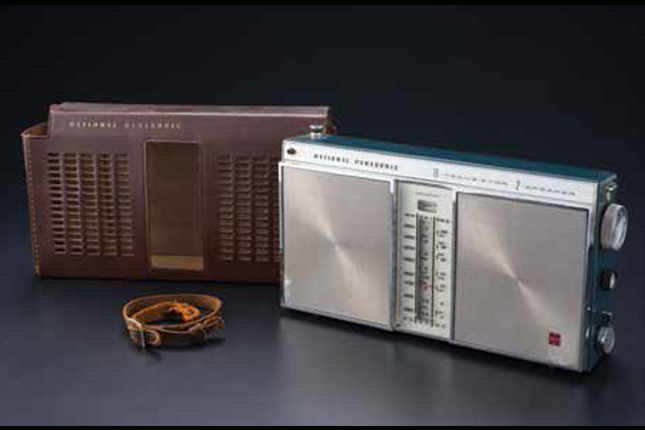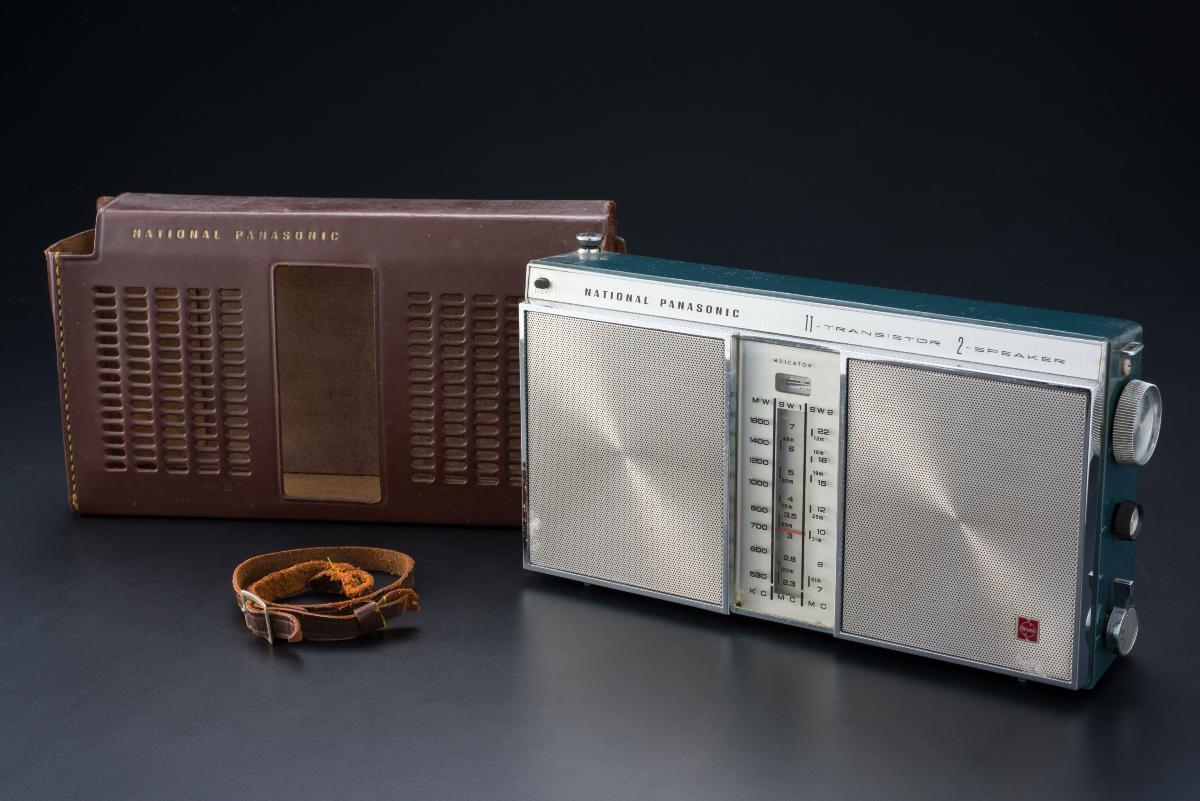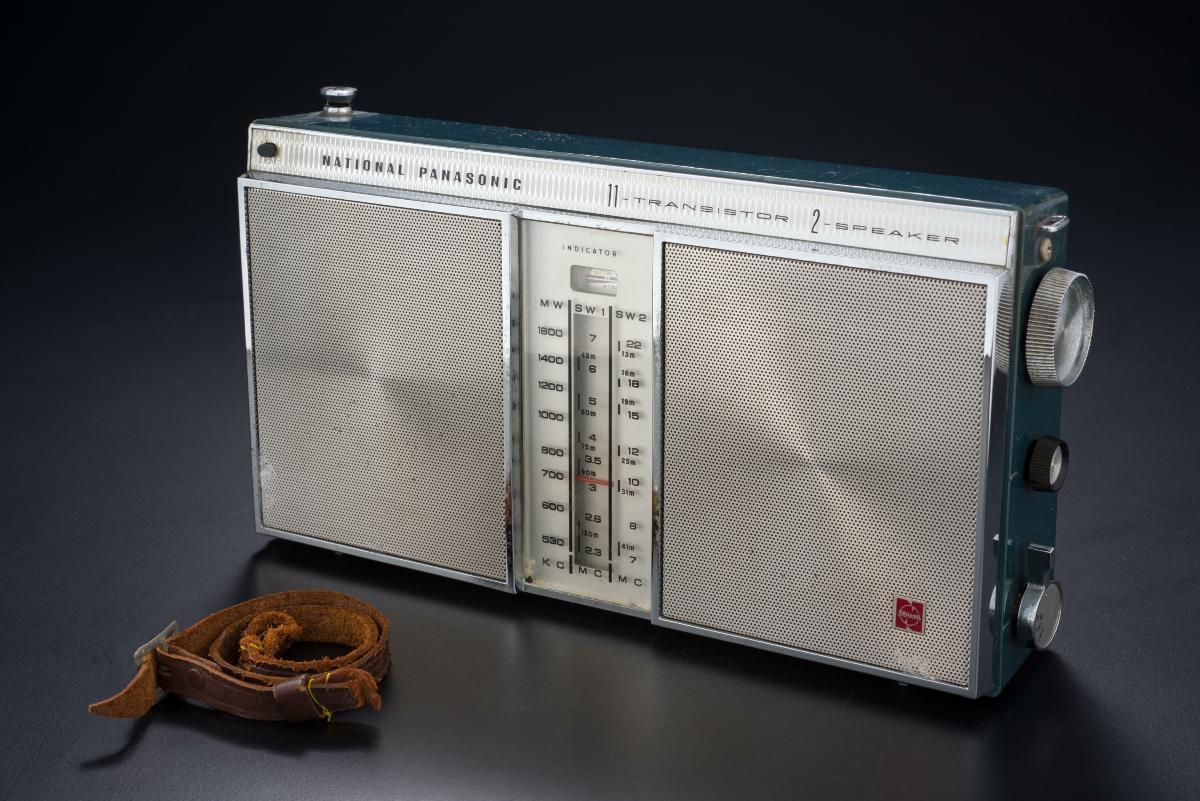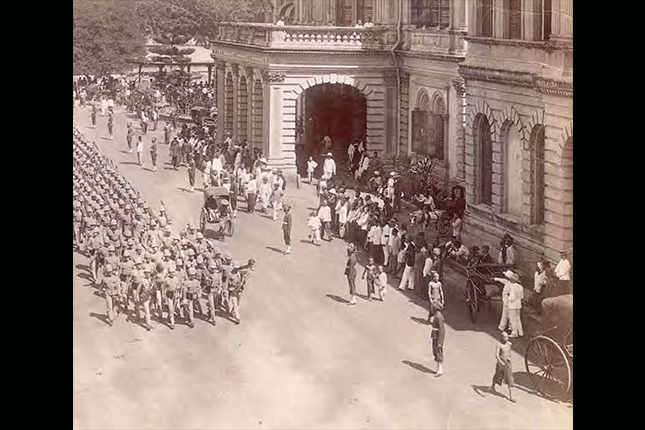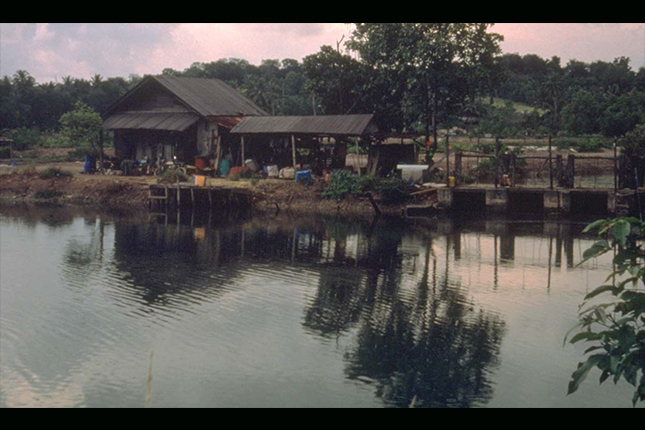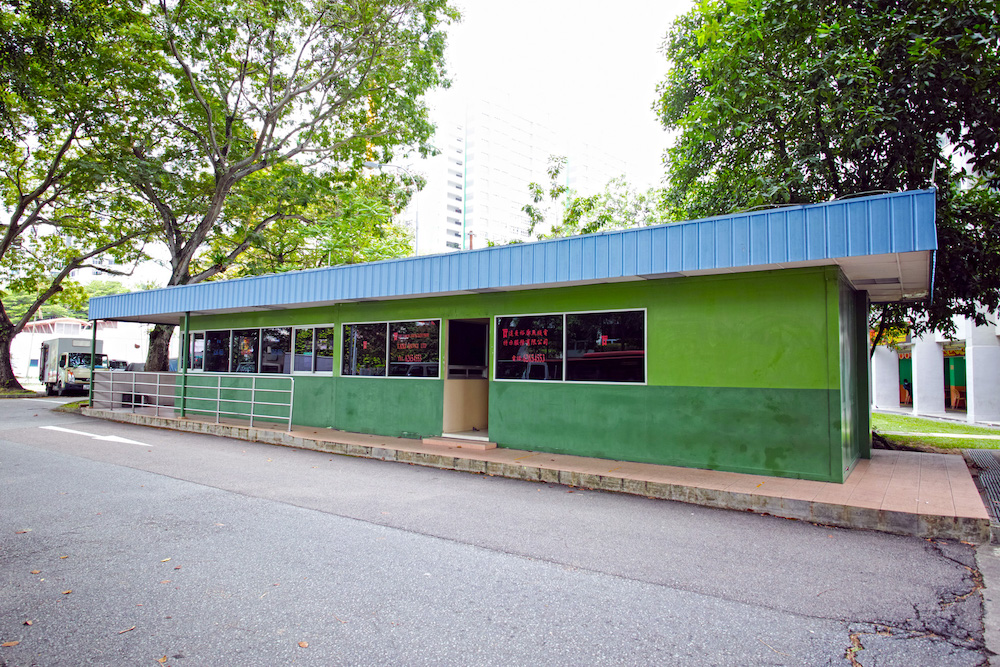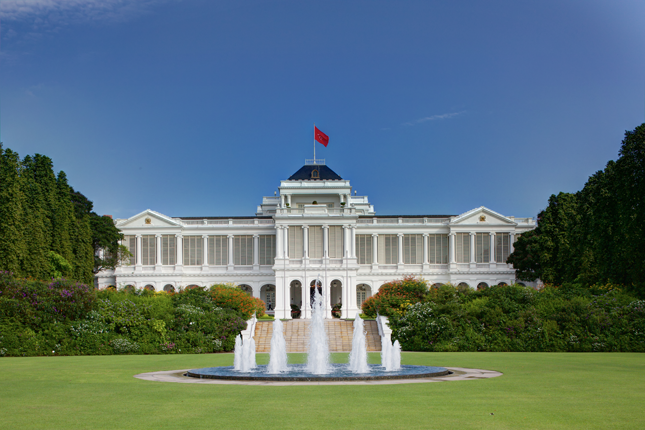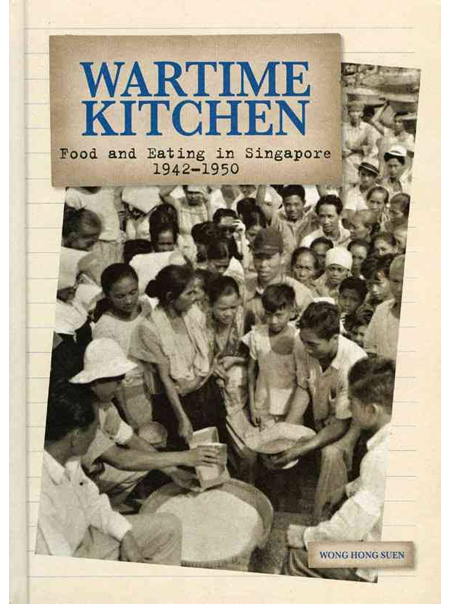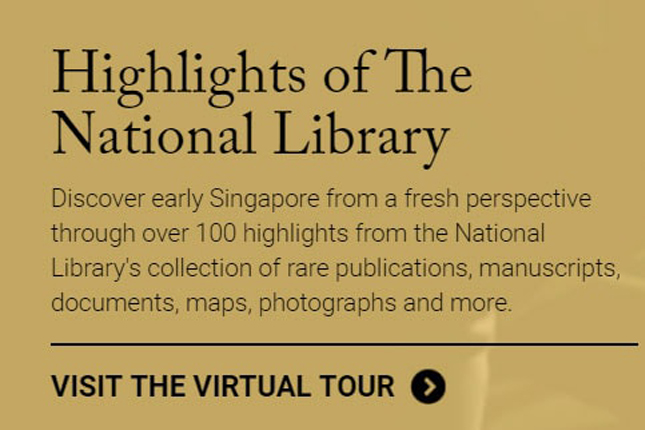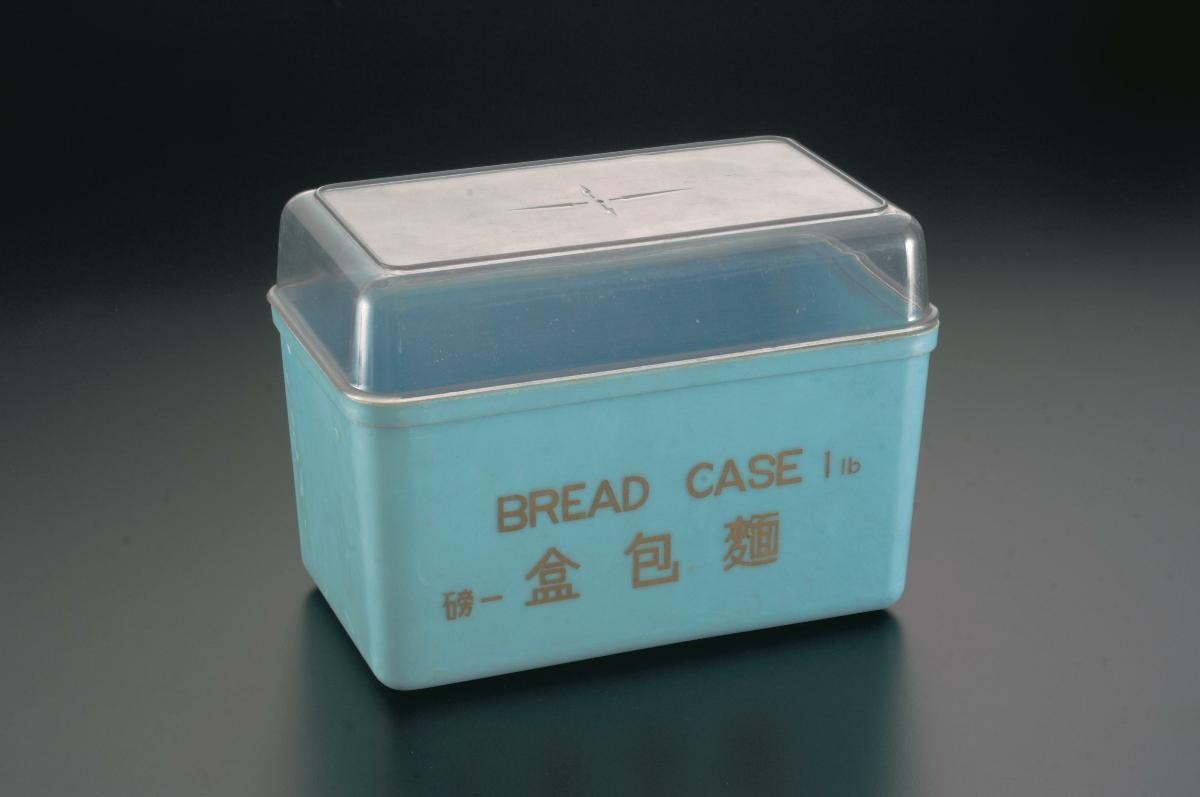Text by Vidya Murthy and Jermaine Huang
MuseSG Volume 9 Issue 2 – Apr to Jun 2016
Radio, when it first arrived, produced a unique acoustic space and created a new aural experience. Like other colonial technologies such as the gramophone and cinema, it created a new and distinct form of entertainment in Singapore. Besides broadening people’s imagination, radio also created a vast community – one that crossed the boundaries of age, ethnicity, gender and nationality.
In 2016, the National Museum of Singapore's exhibition Celebrating Radio: Sounds from the Past thematically charted some of the significant phases of Singapore's broadcasting history, from 1930s to 1980s. The audience was treated to a rich soundscape comprising live commentaries, folk theatre, jingles, music, slogans, stories and speeches, which complemented the narrative.
Listening to the radio was a common pastime for children from the 1950s to 1970s. Children’s programmes included educational storytelling, song dedications, radio plays and live performances by young artists. In a specially designed interactive space within the exhibition, children entered the immersive environment of a broadcasting room. Engaging through imagination and drama, children could role-play a radio broadcaster, read stories aloud and make song dedications. Outside the broadcasting room, parents and children could design their own vinyl records or make vintage radio boxes for a donation of $2. They could also try their hand at creating sound effects.
Amateur Experiments (1930s to 1940s)
Radio broadcasting in Malaya began as an amateur, experimental and private endeavour. In Singapore, there were the Amateur Wireless Society of Malaya (1924 to 1928) and Radio Service Company of Malaya’s ZHI (1933 to 1936). Besides news bulletins and talks, the ZHI broadcasted both gramophone and live music from local dance halls.
Invented in 1877, the phonograph or gramophone is a device that allows both the recording and reproduction of sound. Pictured here is a phonograph produced by the Aeolian Company. These Aeolian phonographs usually came with a patented feature – the graduola, a cable that allowed the volume to be controlled from a distance.

With the government’s decision to issue broadcasting licenses, radio services became more structured and regulated. The British Malaya Broadcasting Corporation (BMBC), a private company based in Singapore, started medium wave transmission in 1937. However, the onset of World War II created another set of challenges.
Medium of Control (1940 to 1946)
Both the British and Japanese governments understood radio’s ability to reach large audiences. A new department to publicise Britain’s war efforts and dispel enemy claims was created in 1939. The government purchased BMBC in 1940, renamed it Malayan Broadcasting Corporation (MBC), and enhanced radio facilities.
The BMBC studios were located within the Cathay Building on Handy Road, which was designed by Frank Brewer. The building also housed a cinema, hotel and restaurant, and was Singapore's tallest building in the 1940s. Its history intersects with that of radio, as news about the advancing Japanese was announced from the BMBC studios. During the war, the Japanese took over the building and used it for its Broadcasting, Propaganda and Military Information departments.

During the Japanese Occupation (1942 to 1945), the function of radio changed. More than a source of power, it was also a medium to control the population. Radio became the chief means to spread the Japanese language, through which listeners were persuaded to accept the larger cultural superiority of Japan.

Radio for Developing Society (1946 to1959)
The nature of broadcasting in Singapore changed after British rule was restored. To fight threats from various insurgents, radio was used to spread political awareness, as well as inform and educate the wider population. Farther out, villages, estates and tin-mining areas began to experience radio. In 1946, the government formed the Pan-Malayan Department of Broadcasting, known on air as Radio Malaya. The Singapore-based station provided programmes for the entire Malay Peninsula. On January 1, 1959, the Singapore station was renamed Radio Singapura, while the Federation’s services continued to be known as Radio Malaya.
Radio and Nation Building (1959 to 1965)
Radio in postcolonial Singapore served as a stage for political theatre and facilitated nation building. The persuasive power and reach of the media was utilised by the edgling government under the People’s Action Party. As early as 1957, one of the Party’s founders, S. Rajaratnam, wrote a six-part radio play titled A Nation in the Making. This dialogue-based play was aired on Radio Malaya and articulated Rajaratnam’s views on Malayan identity.
n 1961, Singapore’s then Prime Minister Lee Kuan Yew wrote and delivered a series of 12 weekly talks on the topic of merger, which was broadcasted in English, Malay and Mandarin.

Radio was instrumental in educating listeners about Malay, the national language. Malay was meant to foster a common identity among Singaporeans. The Ministry of Culture published a multilingual booklet containing 16 lessons that were broadcast from April 11 to June 1, 1960.

After Singapore’s merger with Malaysia in 1963, broadcasting services were reorganised. Radio Malaysia was created, with its headquarters based in Kuala Lumpur, while Radio Singapura remained here. In that same year, Television Singapura was launched as Singapore’s first television station. After independence in 1965, Radio Singapura and Television Singapura merged to form Radio Television Singapura (RTS) as a department under the Ministry of Culture.
Voice of the Nation (1960s to1980s)
Radio played a major role in shaping postcolonial Singapore. The multilingual nature of radio programming in Singapore strengthened vernacular traditions, particularly in drama and music. Programmes often highlighted local experiences and attempted to articulate the Singapore identity. Traditions such as storytelling were also facilitated by radio. Several well-known Rediffusion storytellers turned the dramatisation of written text into a fine art. Rediffusion (Singapore) Pte Ltd started its services in 1949, broadcasting entertainment materials in Malay, English, Mandarin and Chinese dialects.

In order to generate finances for broadcasting, commercial advertising was introduced in 1960. In 1980, RTS was renamed Singapore Broadcasting Corporation (SBC). As a statutory board, SBC was tasked with providing information, education and entertainment. Radio services were augmented to include FM stereo services, a new Radio Programmes Division and programming adapted to nine channels in English, Mandarin, Malay and Tamil.
Transistor Radios
Transistor radios altered the way radios were used. While large radios encouraged families to gather and listen to programmes together, portable transistors were sources of personalised leisure. As mass produced items, they were affordable. Compact radios with simple controls and attractive casings became favoured consumer items. This was until portable cassette and CD players that offered better sound quality emerged in the 1980s.

Radio and Popular Music
Broadcasting both local and international music, radio in Singapore inspired many to make music. Their songs were in turn popularised on the radio, producing several local celebrities. One of the most successful local shows was Radio Malaya’s Talentime. First aired in 1949 and hosted by Kingsley Morrando, the show became a popular platform for local talent. In the 1950s, the popularity of radio and the invention of the electric guitar in America introduced listeners in Singapore to jazz, rhythm and blues, swing, and rock and roll. Listening to these musical styles encouraged young people to create local bands and produce original content.




